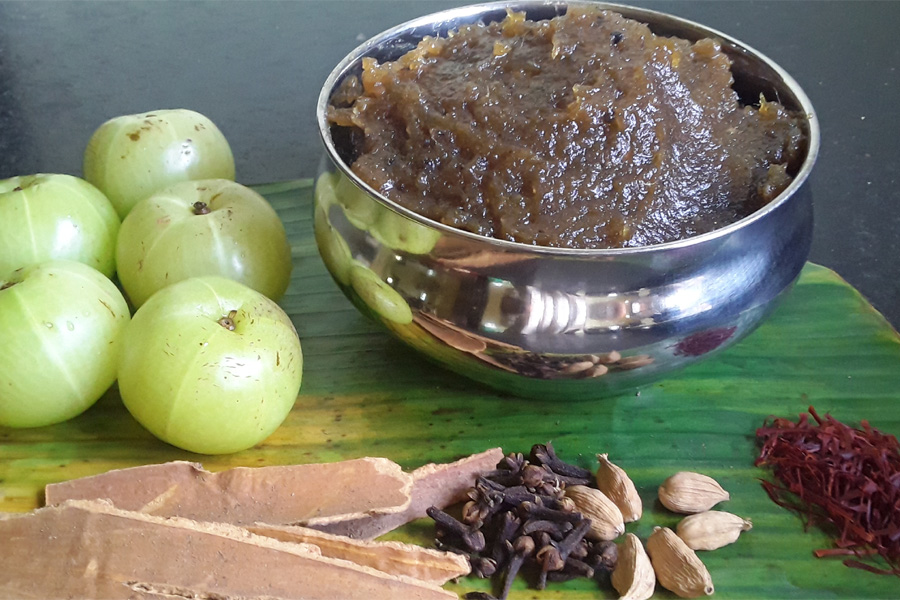Baalekaayi happala | Raw banana papad

By Leena Hegde, Puttanamane
Baalekaayi or raw (unripe) banana happala or papad is a thin crispy cracker. Summer is the time to make all types of happala or papad, and raw banana happala is one among them. This can be used as a side dish to spice up a meal or as a mid-evening snack.
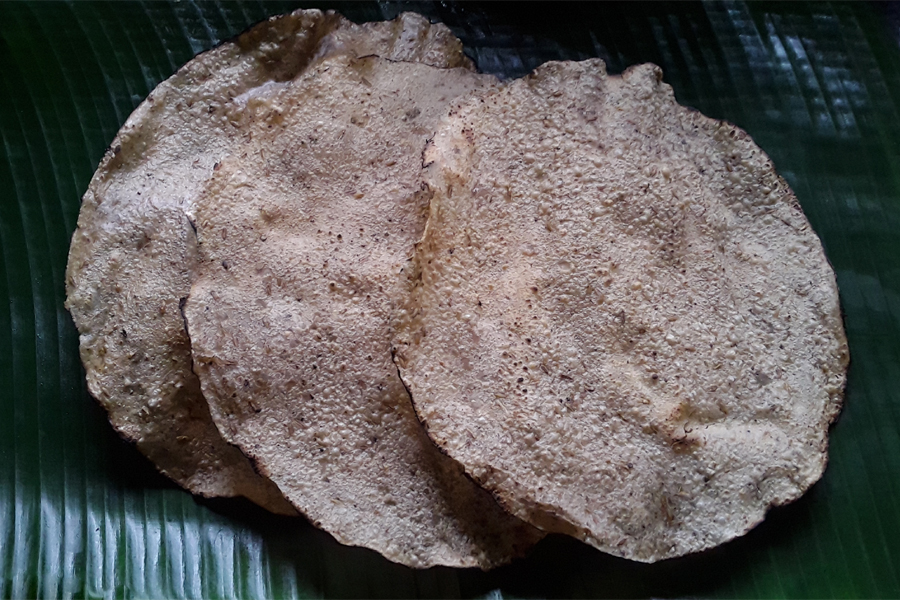

Prep time
2 days
Cook time
0
Cool off time
0
Total time
2 days
Course
Varied
Diet
Vegan, Vegetarian
Difficulty level
Easy
Servings
10 happala
Ingredients
-
5 medium raw (unripe) bananas
- 1 teaspoon cumin seeds (jeerige / jeera)
- 10 black peppers
- Salt as required
- Water as required
Cookware / Utensils
-
Bowl(s)
- Banana leaves
- Mixer
- Muslin cloth
Instructions
Instructions
How to make Baalekaayi happala
- Wash raw bananas and cook them to a soft texture.
- Once cooled peel them and chop roughly.
- Take them in a mixer jar. Add cumin seeds, black pepper, and salt as required.
- Grind to a smooth dough while adding water if and when required.
- Transfer happala or papad dough to a bowl.
- Take 3 to 4 cups of water in a large bowl and keep aside.
- Wash banana leaves thoroughly.
- Take a portion of dough and place it on backside of a banana leaf.
- Give a medium thick round shape to the dough with your fingers.
- Wet your hand with water that was kept in a bowl earlier.
- Smoothen out the happala or papad surface with your wet hand.
- In this way make all happala or papad.
- Keep them in sun on a clean and dry place, preferably on a higher floor.
- You can cover them with a mesh to avoid dust particles during strong wind.
- In the evening take them inside.
-
At night or next morning remove banana leaves.
Note: Banana leaf should become soft to remove them. - On the second day, spread them evenly in sun on a clean and dry cloth.
- Cover them with a thin, dry, and clean cloth.
- In the evening take them inside and let them settle to room temperature.
- Then store them in an airtight container.
- Roast and add them to your meal or snack as and when required.
Step by step guide
How to make Baalekaayi happala
1. Wash raw bananas and cook them to a soft texture.

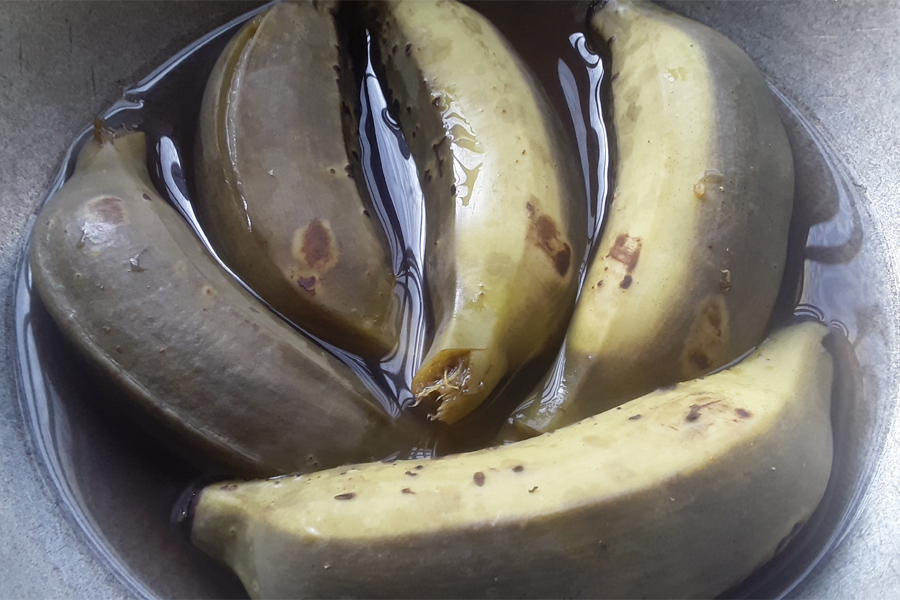
2. Once cooled peel them and chop roughly.
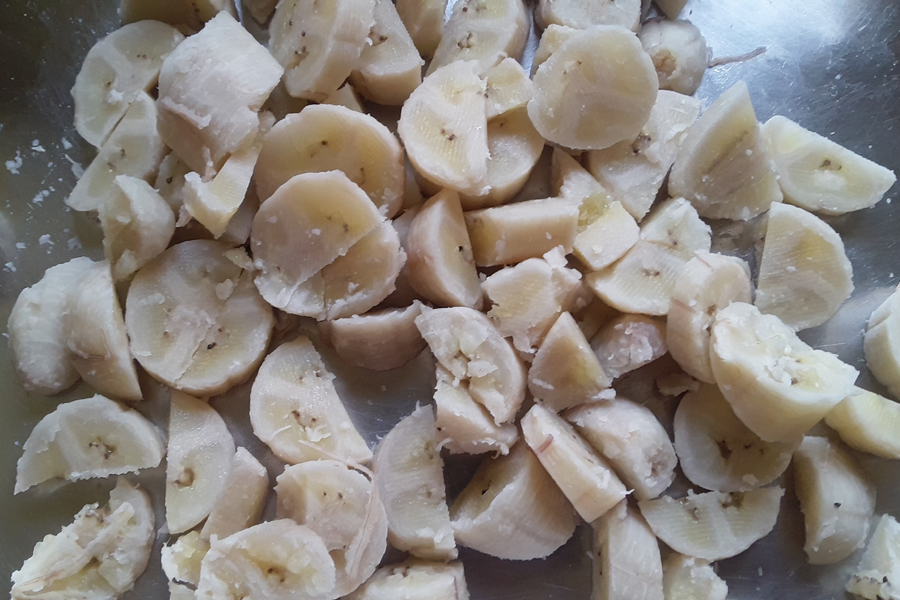
3. Take them in a mixer jar. Add cumin seeds, black pepper, and salt as required. Grind to a smooth dough while adding water if and when required.
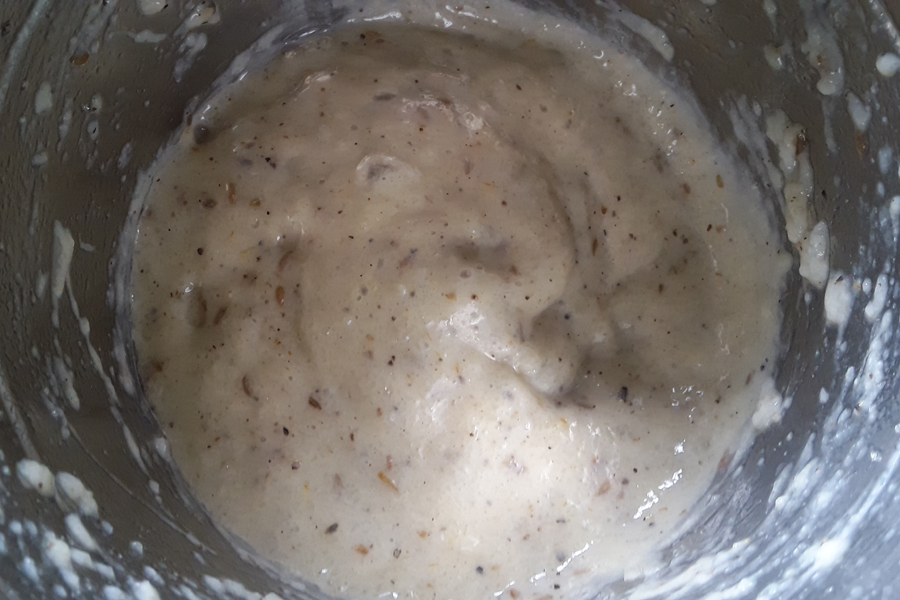
4. Transfer happala or papad dough to a bowl.
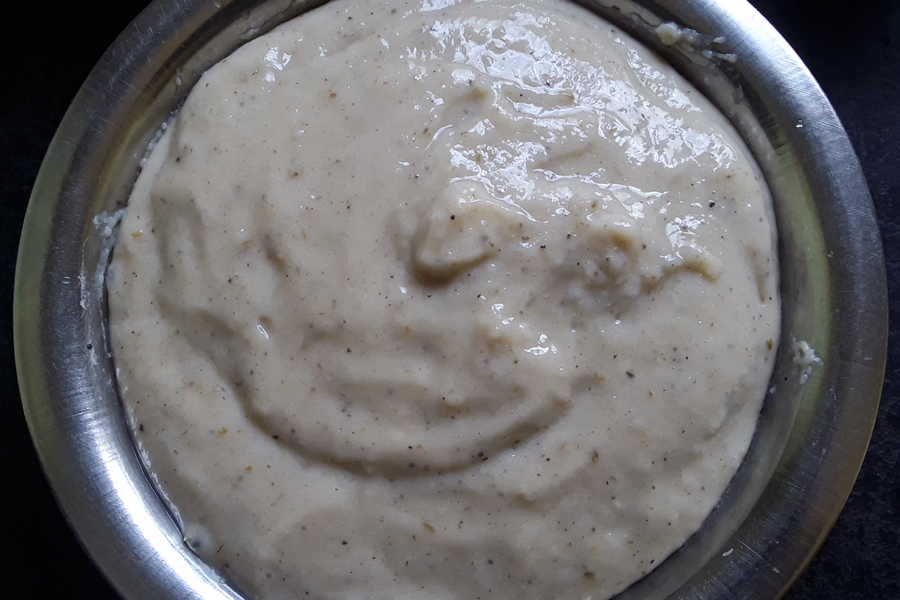
5. Take 3 to 4 cups of water in a large bowl and keep aside.

6. Wash banana leaves thoroughly.
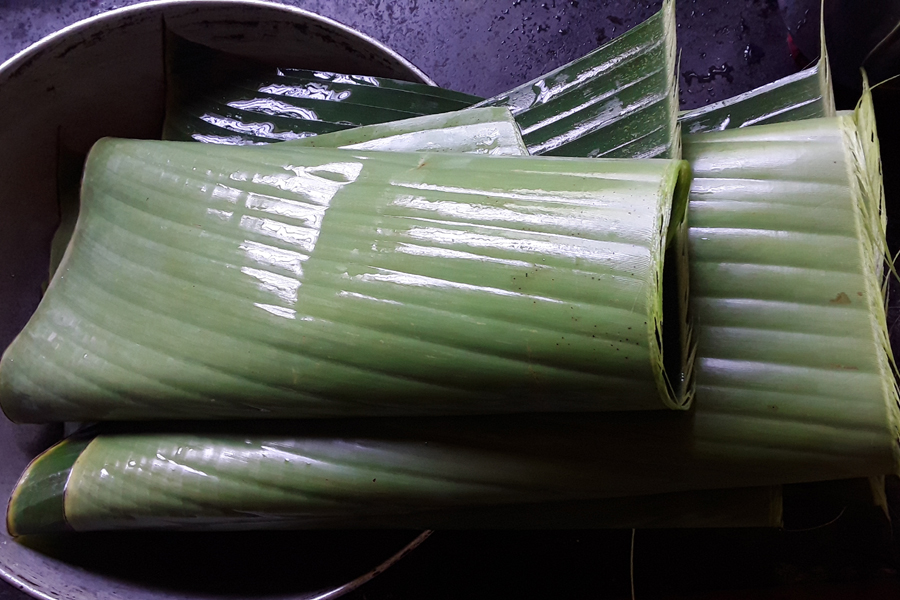
7. Take a portion of dough and place it on backside of a banana leaf.

8. Give a medium thick round shape to the dough with your fingers.
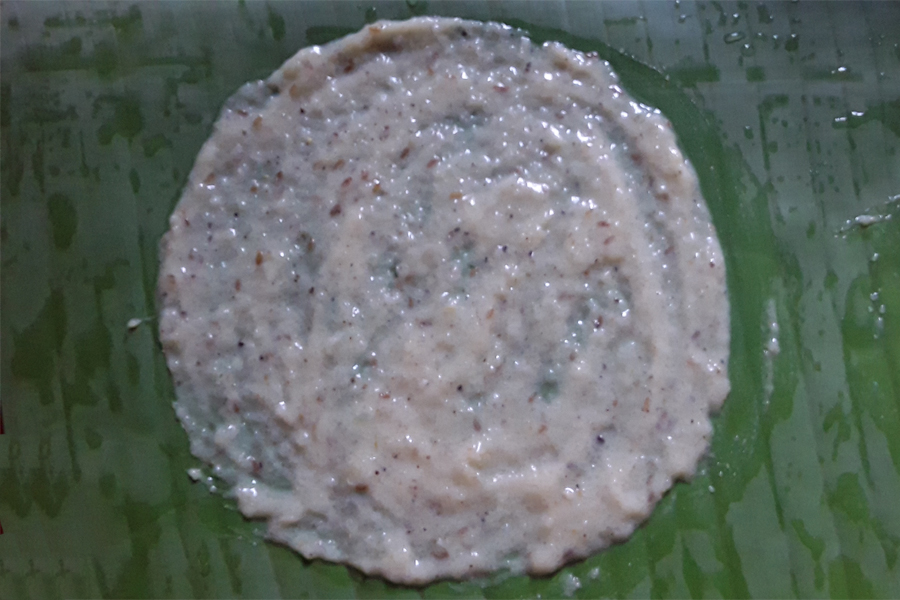
9. Wet your hand with water that was kept in a bowl earlier.
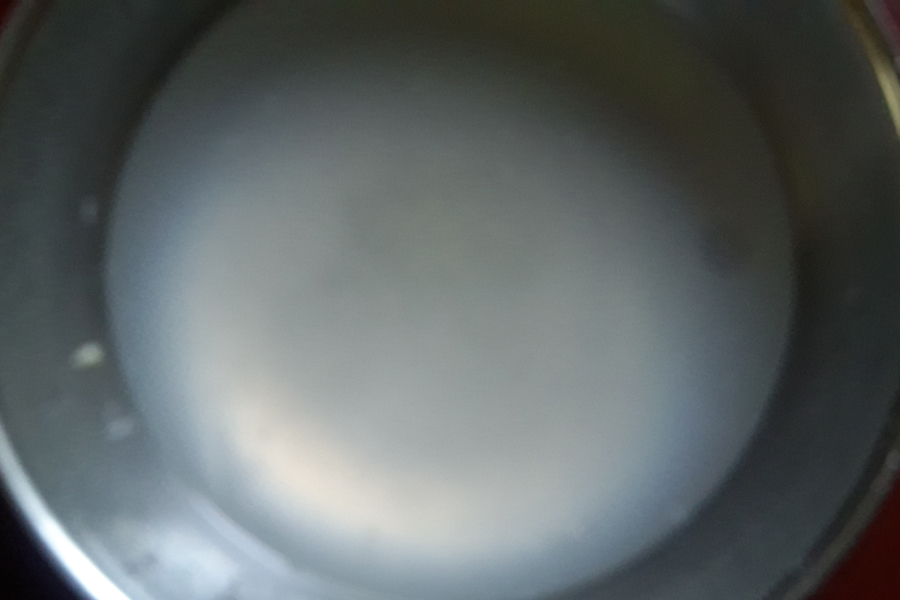
10. Smoothen out the happala or papad surface with your wet hand.

11. Make all happala or papad and keep them in sun on a clean and dry place, preferably on a higher floor. You can cover them with a mesh to avoid dust particles during strong wind.
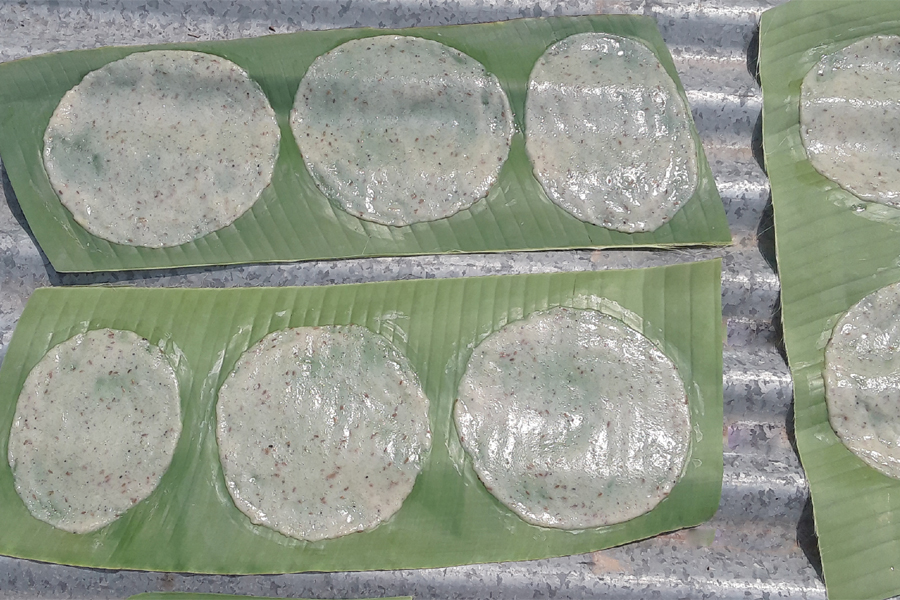
12. In the evening take them inside. As it was a hot sunny day these happala or papad were almost dried in a single day.

13. At night or next morning remove banana leaves.
Note: Banana leaf should become soft to remove them.
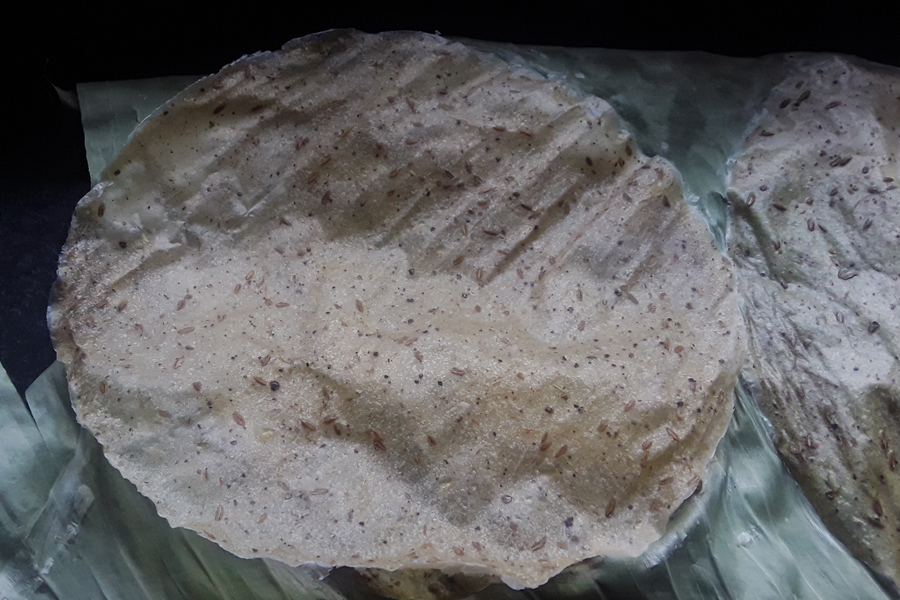
14. On the second day, spread them evenly in sun on a clean and dry cloth. Cover them with a thin, dry, and clean cloth.
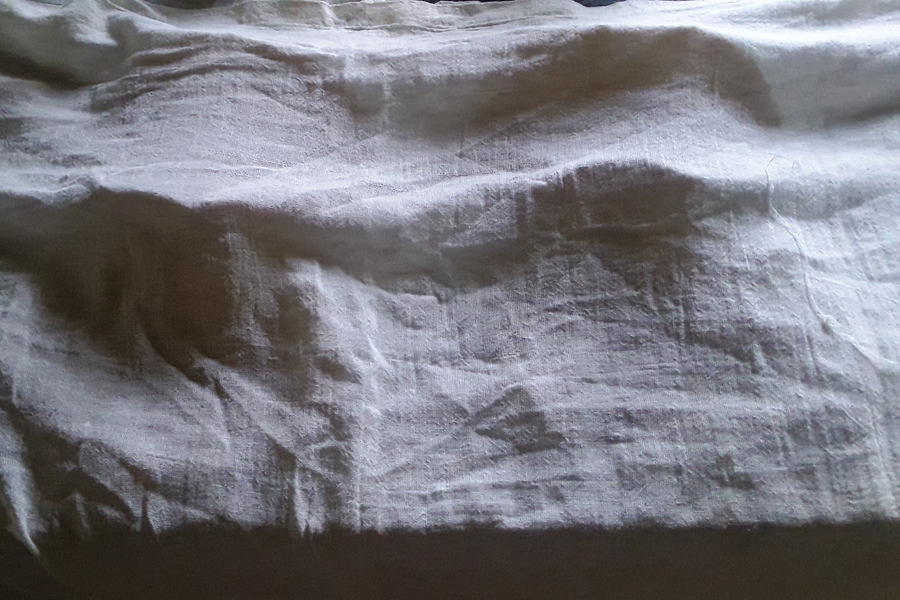
15. In the evening take them inside and let them settle to room temperature. Then store them in an airtight container.

16. Roast and add them to your meal or snack as and when required.
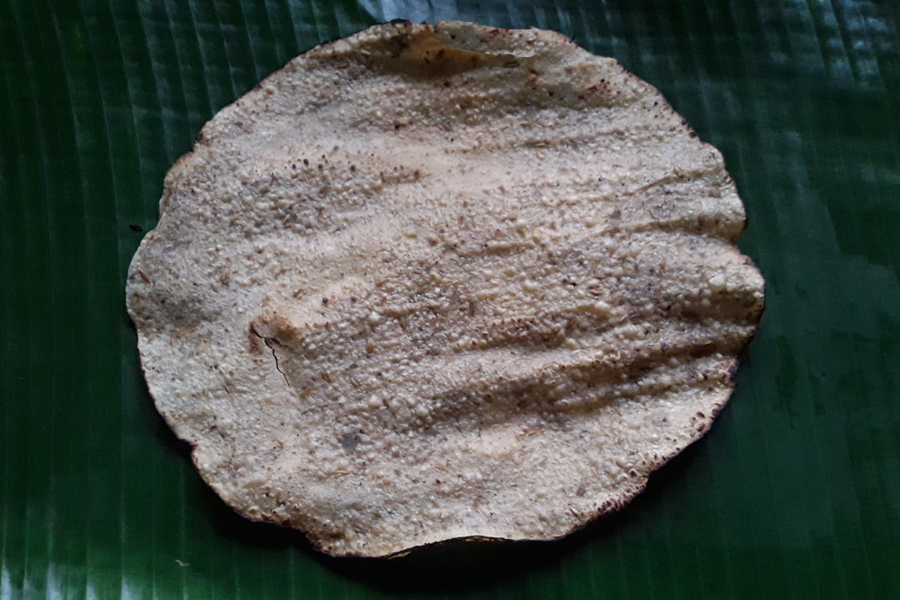
Notes
-
Drying place: Generally happala are dried on higher floors in direct sun, for a more controlled drying process. Instead you can use a drying rack or a table to dry them. Wherever you dry them, make sure the surface is dry, clean, and hygienic.
In most of the havyaka households, Atta (a temporary higher floor built with wood) is built during summer for the sole purpose of drying crops and food items. A clean sheet or cloth is spread on Atta and happala are dried.
- Drying time: Drying time depends on time length in a day you keep it in sunlight, temperature, humidity, and thickness of the happala. I made this during hot summer days and it took only 2 days to dry happala. It may take more than 2 days, but make sure there is no moisture left in the dried happala. Flip them every day or on alternative day when keeping in sun.
-
Storage and shelf life: Store well-dried banana happala in a dry and clean container with proper or airtight lid. Keep it in a cool and dry place. Do not use wet or unclean hand when taking out happala.
Well-dried happala stays good for about three months at room temperature. However, the shelf life depends on room temperature, weather condition, storage container and place, and usage style.

Baalekaayi happala | Raw banana papad
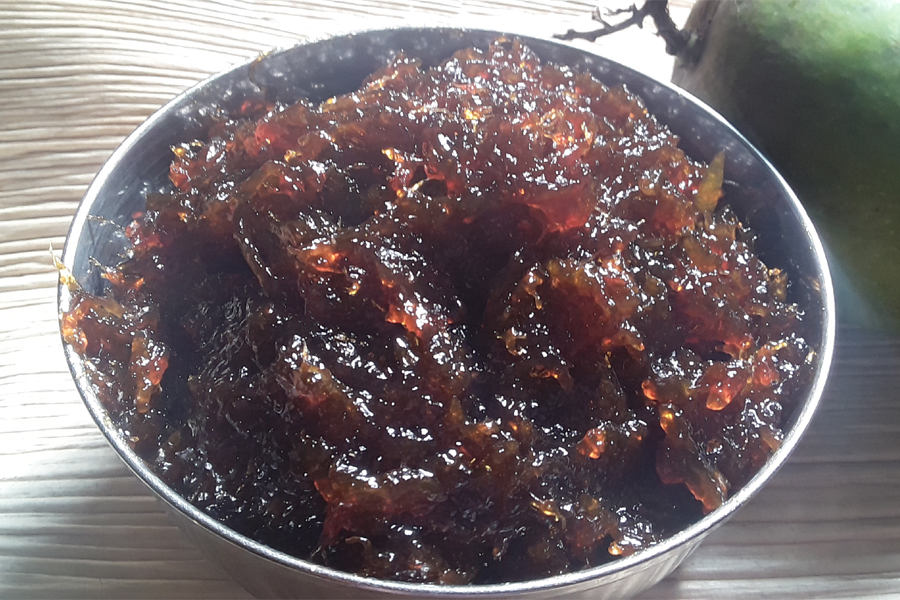
Maavinakaayi gulamba | Raw mango sweet preserve
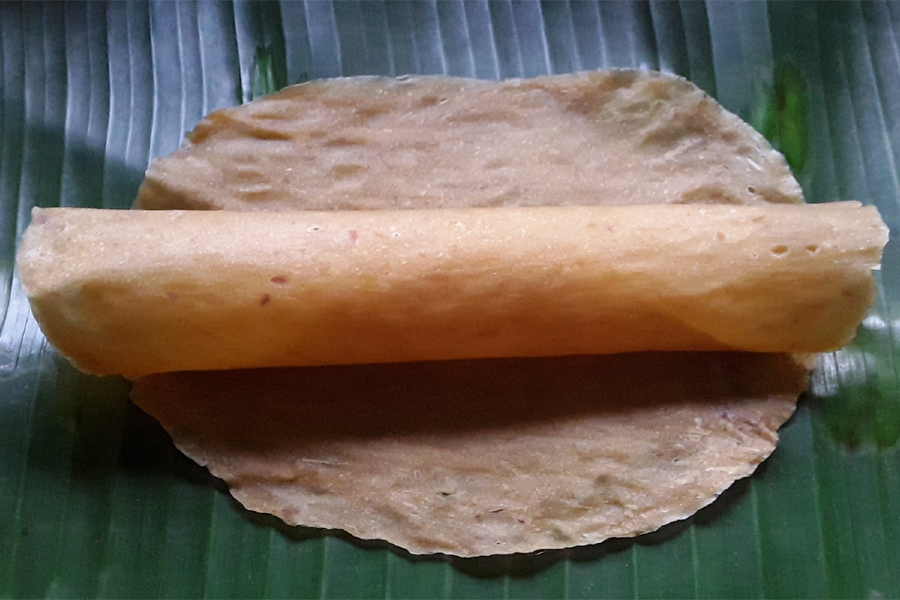
Halasina hannina happala | Jackfruit papad
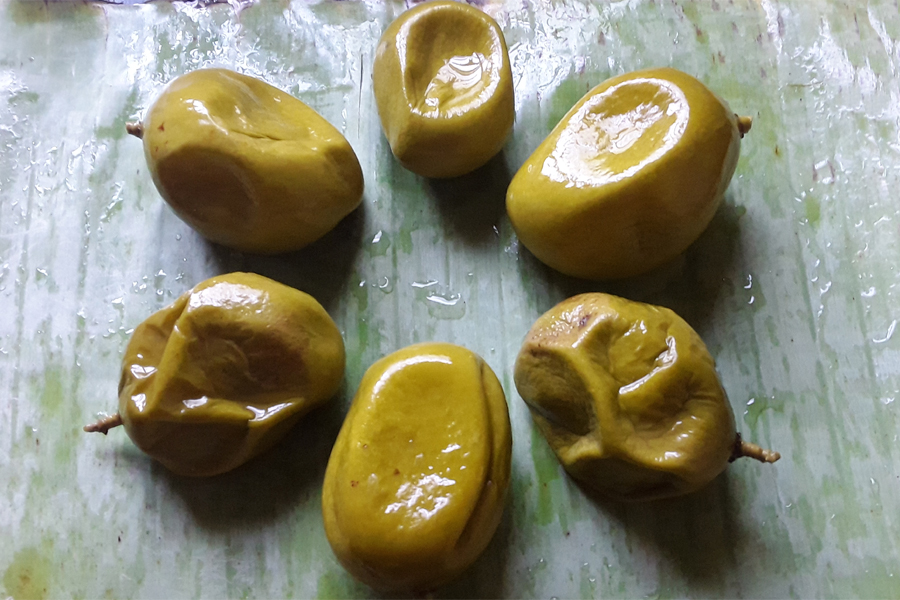
Kochgaayi | Raw mango preserve
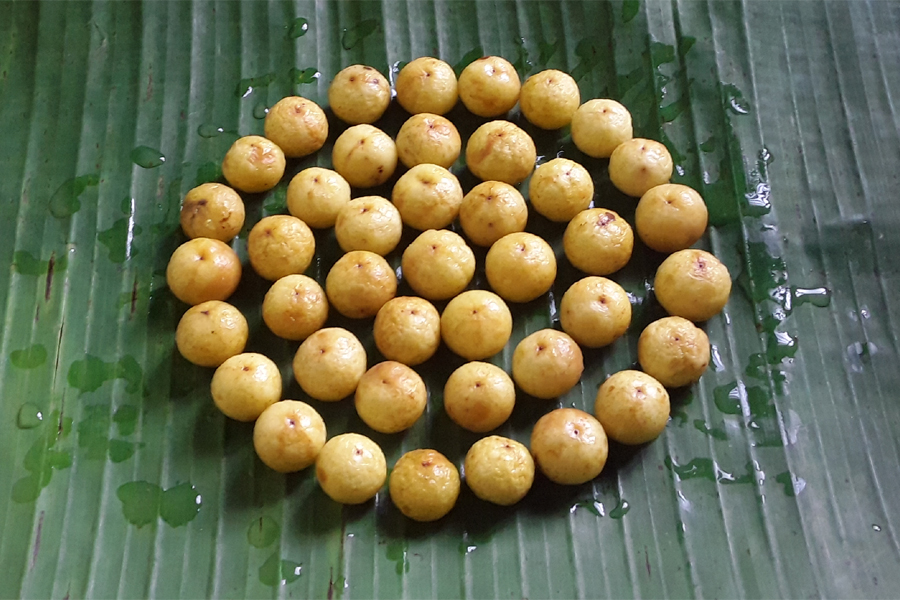
Indian gooseberries salt preserve
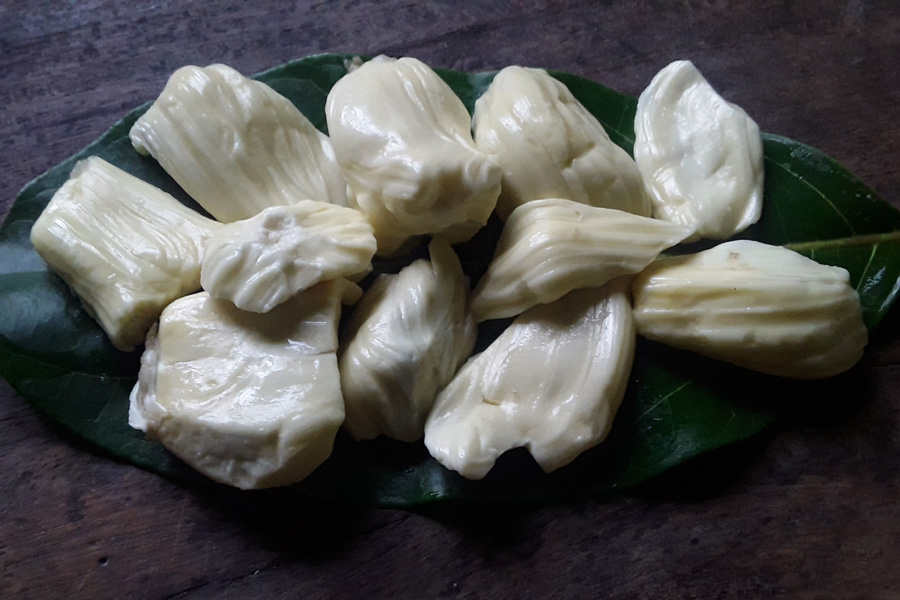
Sole | Raw jackfruit preserve
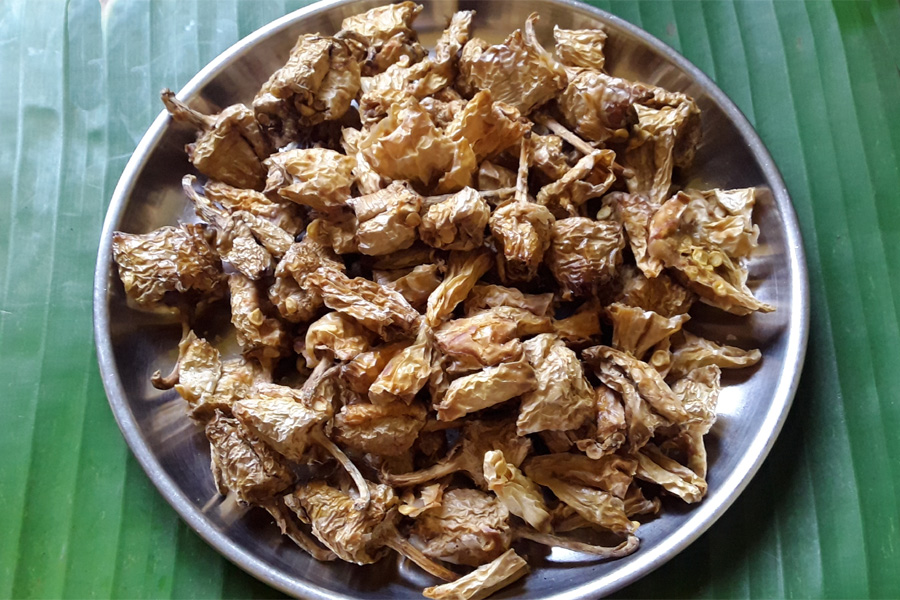
Sandige menasu | Sun-Dried green chillies
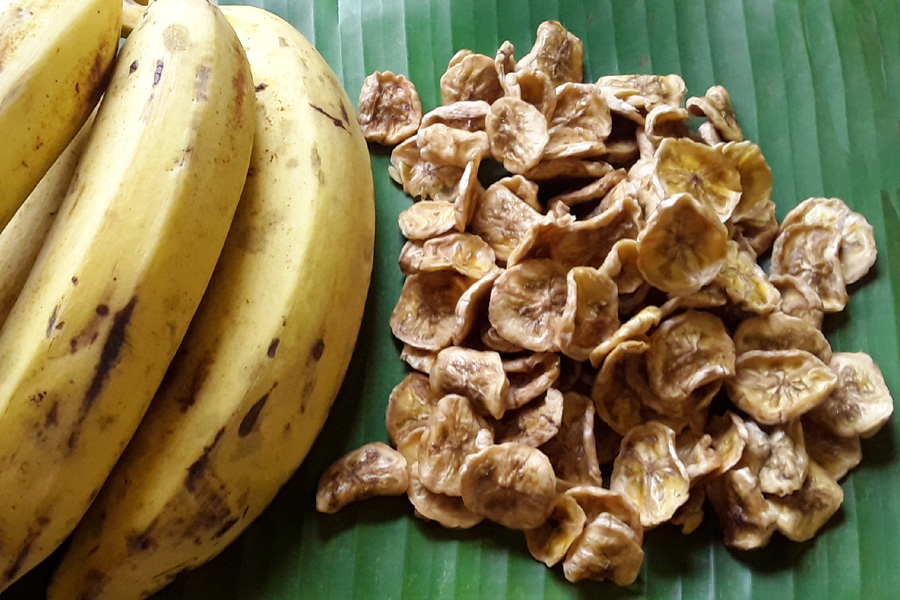
Shikeli | Sun-Dried Bananas
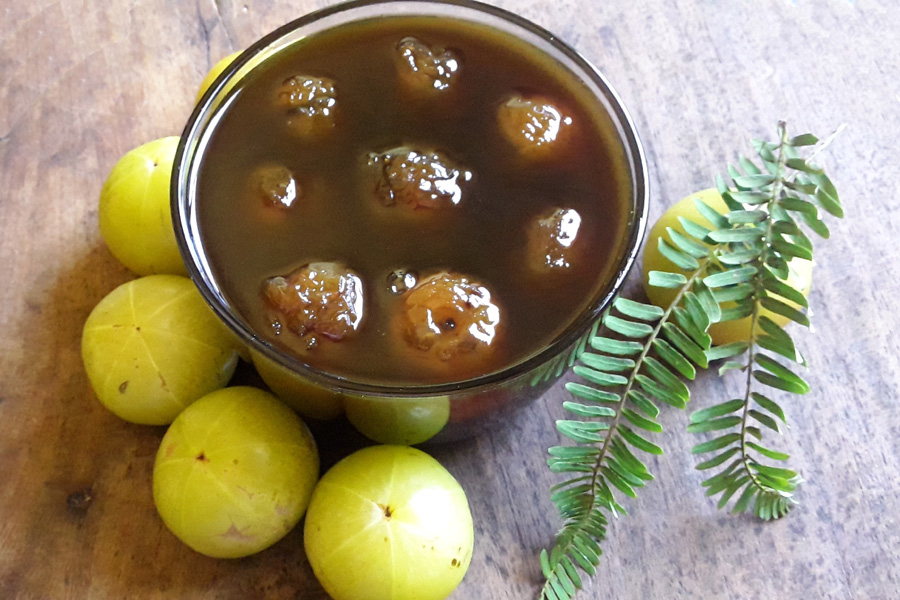
Nellikaayi Gulamba | Indian gooseberries sweet preserve
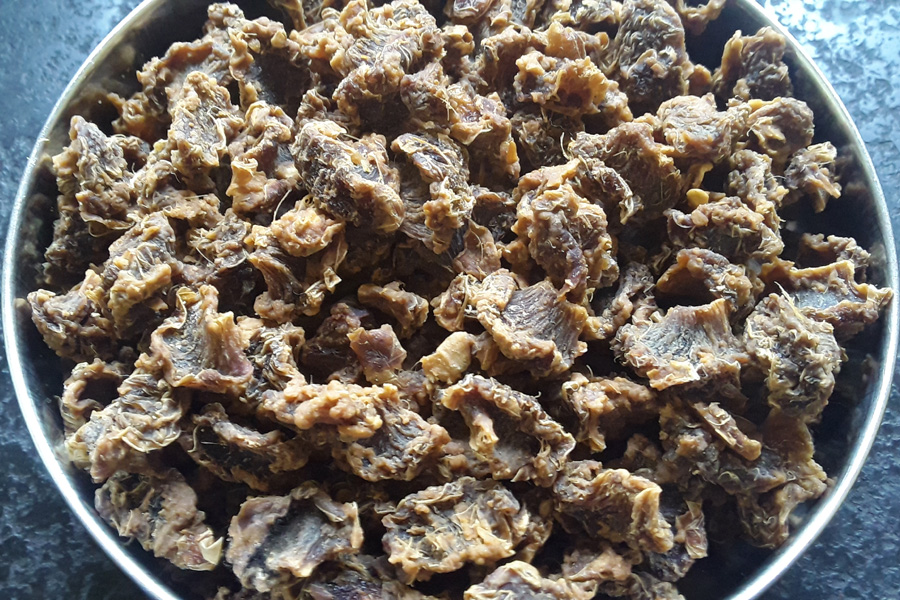
Nellikaayi adike | Dried spicy Indian gooseberries
